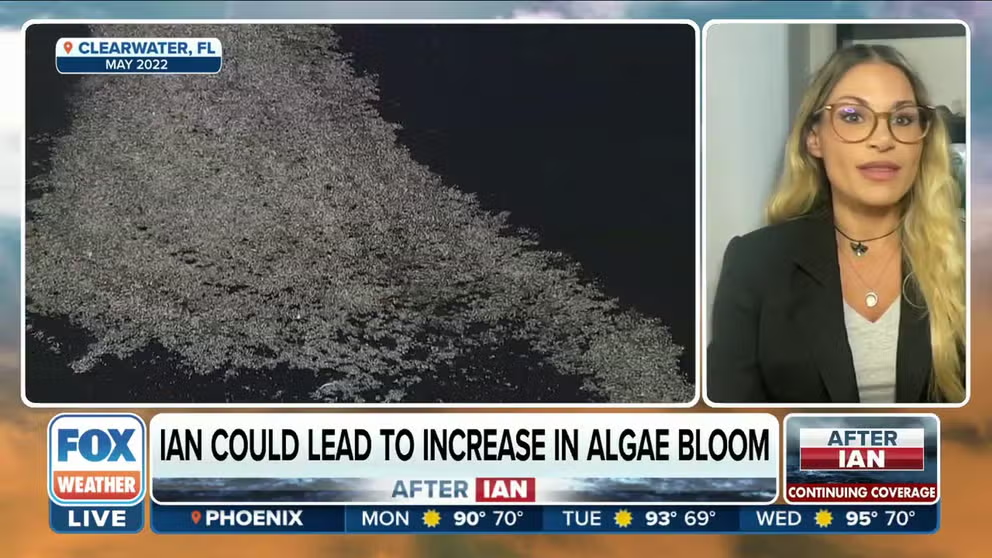Deadly red tide feared to return following Hurricane Ian
The Florida scientist points to the massive amounts of debris in floodwater washing into the Gulf and Atlantic that could create a repeat of the massive red tide outbreak.
Ian leads to bacteria, pathogen level concerns in Florida: Environmental engineer
Environmental Engineer Tracy Fanara Ph.D. discusses the likelihood of an algae bloom increase for The Sunshine State as bacteria spreads in the coastal waters of Florida.
Many Floridians remember the mounds of dead fish lining beaches and signs warning beachgoers to keep out of the water thanks to a two-year-long red tide outbreak after Hurricane Irma. Now, one environmental engineer fears a repeat after Hurricane Ian.
"Any time we get a regular storm event, we have all of this nutrient loading from fertilizer or herbicides or wastewater overflows," Tracy Fanara, Environmental Engineer and author of red tide research, told FOX Weather Monday. "Now, this was next level."
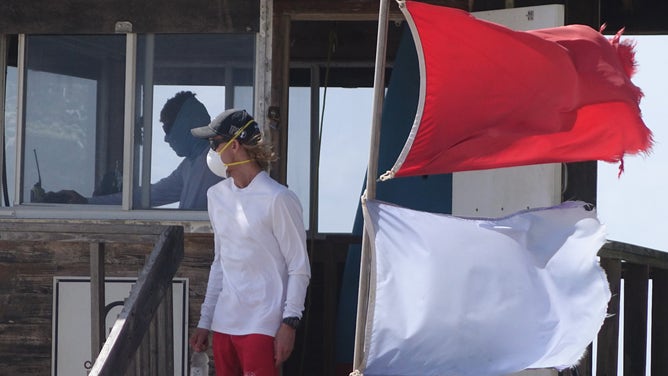
Lifeguards at Red Reef Park in Boca Raton, Fla. wear protective masks as red flags warning people of red tide in October 2018.
(Joe Cavaretta/Sun Sentinel/Tribune News Service / Getty Images)
Red tide is a naturally occurring harmful algae bloom. The algae, always in the water, devour the newly found nutrients and blooms out of control. The blooms produce toxins that kill fish, shellfish, birds and mammals. The algae and toxins can irritate the skin, eyes and respiratory tract of people, according to the Florida Fish and Wildlife Commission.
Humans can get sick after eating fish or shellfish from red tide areas, Fanara told FOX Weather last fall.
REMEMBER ALL THE FISH THAT DIED IN CALIFORNIA LAST MONTH? BLAME FLUSHING TOILETS CREATING RED TIDE
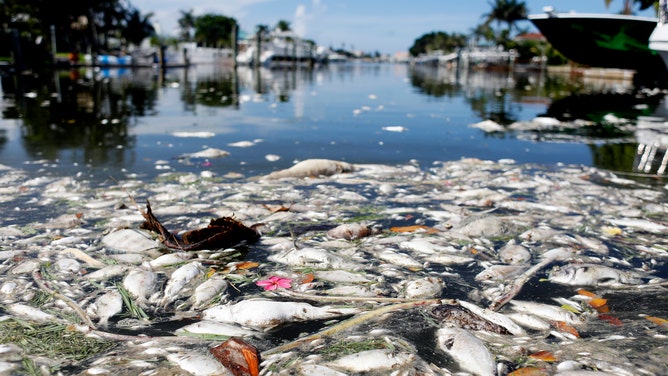
Dead fish, killed by red tide, clog an inlet in the Tampa Bay area.
(Octavio Jones / Getty Images)
"So with Hurricane Ian, we have all of these chemical components. We have submerged cars, we have so much more bacteria because not only did we have wastewater overflows, we had pipes burst. We have people that can't flush toilets because the water table is so high. So they're actually using outside as their toilet," explained Fanara about Hurricane Ian’s effects on supercharging nutrients available to algae. "So we have all of this bacteria coming into our coastal waters. And that is our main concern right now is the bacteria levels, the pathogen levels."
HURRICANE IAN BY THE NUMBERS: THE SCOPE OF THE CATASTROPHIC DAMAGE
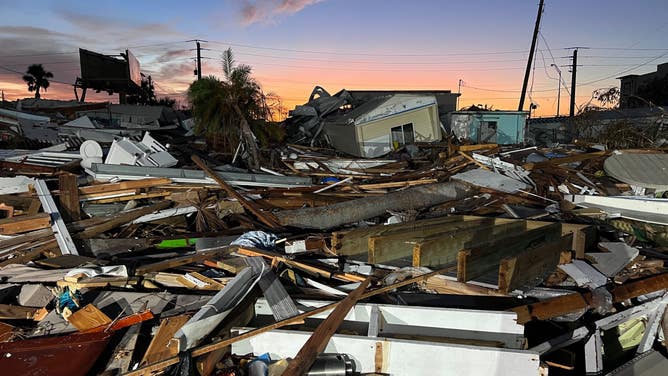
This is all that is left of a southwest Florida neighborhood after Hurricane Ian.
(FOX Weather)
And it’s not just the Gulf Coast inundated with nutrient-rich floodwater. Over 7 million gallons of sewage leaked through manhole covers, flooded streets in Brevard County then into the Indian River Lagoon, reported FOX 35 Orlando.
"When I look at this now, I just see it being used as a toilet," environmentalist Estelle Bailey told FOX 35 Orlando.
Photos from astronaut Bob "Farmer" Hines onboard the International Space Station showed massive amounts of dirt and silt being dumped into the Gulf of Mexico days after Ian struck.
ASTRONAUT ON ISS SPOTS FLORIDA’S MUDDY WOUNDS LEFT BY HURRICANE IAN
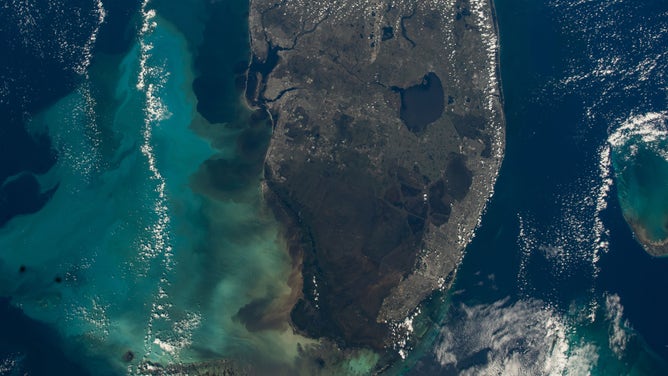
From the ISS, an astronaut took photos of the silt, dirt and pollution ridden floodwaters from Hurricane Ian, flowing into the Gulf of Mexico.
(NASA)
The water and dirt are rife with decomposing felled trees, fertilizers from farms and pollutants.
"This picture shows how the Florida Peninsula is shedding all the water Hurricane Ian dumped on it," Hines tweeted, adding the photo was taken two days after Ian's landfall.
Upwelling, a possible source of red tide
The Tampa Bay region also experienced a reverse storm surge, just as they did during Irma. As Ian made landfall, its winds blew gulf water away from Tampa Bay. Residents were actually able to walk out into the bay.
HOW TO WATCH FOX WEATHER ON TV
What is a reverse storm surge? See how Hurricane Ian drained the bays in Florida
A reverse storm surge emptied bays and inlets in Florida as Hurricane Ian neared landfall—leaving the bizarre sight of bare, muddy ground where water typically sits.
The same reverse surge occurred during Hurricane Irma in 2017. Meteorologist Ian Oliver referred to the event as "Irma 2.0" during Ian's landfall.
Fanara said the reverse surge could have resulted in upwelling. Deeper, colder nutrient-rich water from well below could have flowed to the surface.
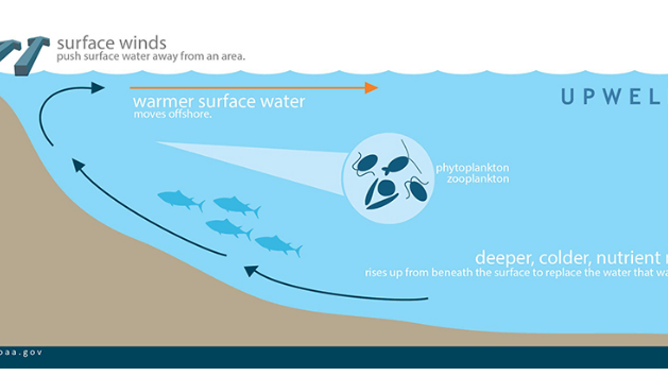
Displaced surface waters are replaced by cold, nutrient-rich water that "wells-up" from below. OceanService.NOAA.gov
(Oceanservice.noaa.gov / FOX Weather)
"The best hypothesis that we have is that these blooms are offshore at the ocean bottom. Now, with the upwelling that we saw of the water being pushed offshore of Tampa Bay, it looks a lot like Hurricane Irma, which we know is fired an upwelling event."
The massive red tide bloom in Florida from late 2017 to early 2019 killed almost 600 sea turtles, more than 200 manatees and over 204 dolphins, according to a Mote Marine Laboratory and Aquarium report.
The bloom also hurt tourism by keeping beach visitors away and slashed the local fishing industry's bottom line.
THE ERA OF THE GULF: IAN JOINS LIST OF 5 OTHER DESTRUCTIVE HURRICANES IN RECENT YEARS
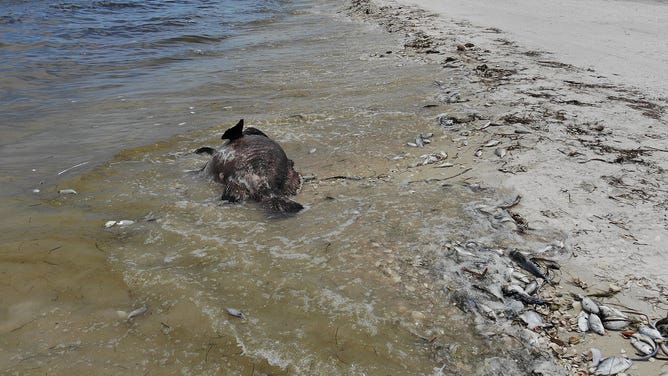
Red tide killed a Goliath grouper in 2018. It washed up on Sanibel Island.
(Joe Raedle / Getty Images)
Fanara and her colleagues will continue to monitor Florida’s water for red tide. At the same time, the Florida Red Tide Mitigation and Technology Development Initiative is in its third year of discovering strategies and technologies to lessen the volume and impact of blooms.
Other companies are looking to combat the algae and ozone to restore areas where red tide depleted the water of oxygen or dead zones.
